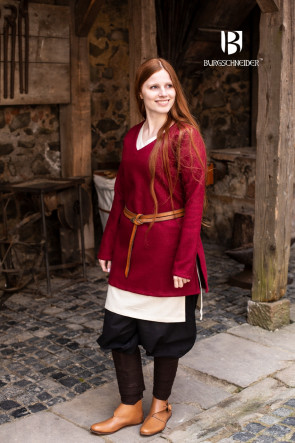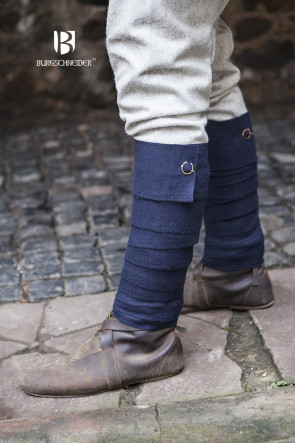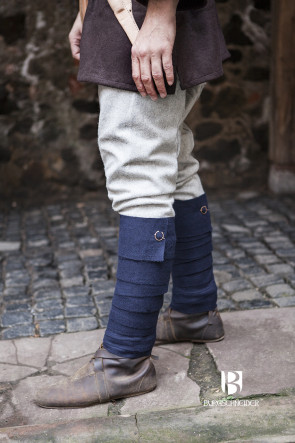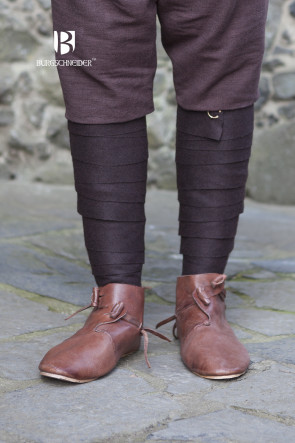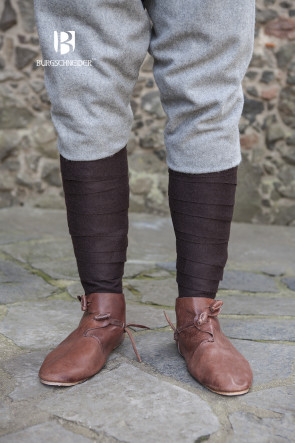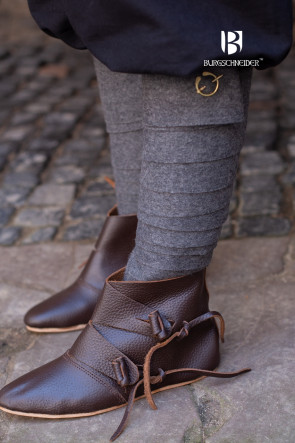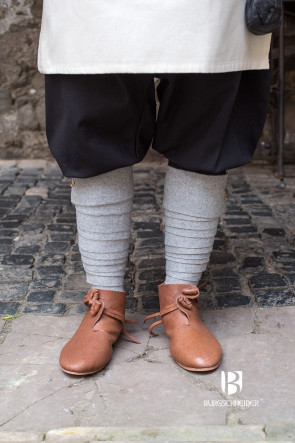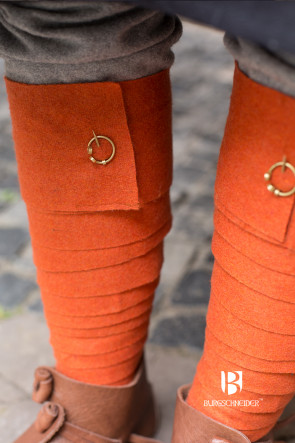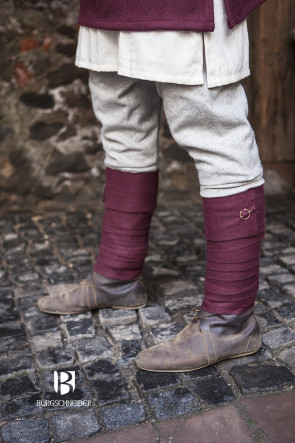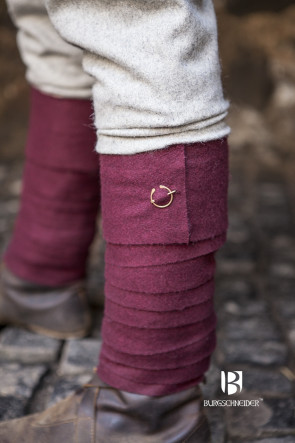Zwergenkostüm
In many fantasy stories—be they novels, videogames or movies—we encounter dwarves. Despite the countless backgrounds, there are some traits by which dwarves can always be recognized: the so-called positive clichés that allow the dwarf player to be identified without any need to explain character.
Dwarves are not necessarily diminutive, but they are smaller than the average human, stocky and brawny, with strong extremities. Another conspicuous feature is their well-groomed full beard, which is usually braided and adorned with metallic beads—and often, even female dwarves wear beards. Most dwarves also project a rather neat, tidy appearance. Just like the time-honored elves, dwarves usually enjoy great longevity and pride themselves on an ancient and exceptionally artisan cultural heritage that they preserve quite carefully.
Dwarves on adventures
In most fantasy worlds, dwarves have a reputation for being less than open-minded and adventurous. They are known to be a reclusive and grumpy culture, dwelling deep within mountains and subterranean tunnels. A dwarf needs a good reason to leave home and embark on an adventure—they are, however, greedy for gold and gemstones, and the prospect of plundering a dragon’s hoard could certainly persuade them to leave their mountain. Perhaps a dwarf is tasked to seek assistance as the mountain is being threatened by an evil power, has been rendered homeless, or even outcast.
Once a dwarf has joined an adventuring party, its members benefit from the dwarf’s toughness and frugality—not to mention the devastating axe blows of dwarven fighters, their expertise on gemstones, ores, and metals, and their proficiency in forging weapons and armor. Since dwarves serve as a bulwark against everyone foolish enough to engage the party in melee fighting, they can be considered the ‘hard-ass’ of the group.
What makes a compelling costume for a dwarf?
Because dwarves, in comparison to humans, are supposed to seem and act alien, a costume for a dwarf should also look exotic and unfamiliar. A compelling depiction of a dwarf can be recognized as such at first glance—and in order to achieve that effect, it’s worth taking a look at archetypically dwarven features:
Square cuts and clothes with “unflattering” lengths compress the silhouette and make the wearer look smaller. In order to effectuate the bulky stature, you can wear wide tunics and pants in numerous additional layers on top of each other, and by combining this with a broad, hooded collar or even pauldrons, beamy leather belts, chunky bracers, and an oversized hat, you create the typical dwarven silhouette.
Leather or metal adornments, while being chunky and heavy, are usually crafted precisely and exquisitely, featuring geometrical patterns with straight, clear lines, well-defined edges, and precise angles—such as borders with rhombs or hexagons. This way, dwarves distinguish themselves from elves, who favor flowing, leaf-like adornments.
-
Wool Tunic Hyria - Red
- Material: Wool Blend
- Genre: Historic
- Sizes: S - XXXL
- Reference: Bernuthsfeld Tunic
€59.90 -
Wool Winingas Aki - Blue
Winingas have been worn since the Iron Age. The Romans at Hadrian's Wall used them, as did the Germanic tribes, Byzantines, Franks, Alamanni, Bavarians, Wends (Slavs), and later in the Middle Ages, the Normans and Vikings. Winingas were widespread throughout Central and Northern Europe.
Learn More
In the beginning, winingas served as a substitute for socks. From foot to lower leg, they are wrapped over the pants to below the knee and fixed with a fibula to protect and keep the wearer warm.
On the basis of textile finds in Damendorf, Oberaltendorf, Bernuthsfeld and the Thorsberg moor, there’s proof these have been worn from the 2nd to the 8th century, and also on the carpet of Bayeux from the year 1066, winingas are shown.
Our Wool Winingas Aki stay in this tradition and are made of wool with the dimensions 380cm x 10cm. Of course, we supply two winingas, you do not buy socks individually.€19.90 -
Wool Winingas Aki - Brown
Winingas have been worn since the Iron Age. The Romans at Hadrian's Wall used them, as did the Germanic tribes, Byzantines, Franks, Alamanni, Bavarians, Wends (Slavs), and later in the Middle Ages, the Normans and Vikings. Winingas were widespread throughout Central and Northern Europe.
Learn More
In the beginning, winingas served as a substitute for socks. From foot to lower leg, they are wrapped over the pants to below the knee and fixed with a fibula to protect and keep the wearer warm.
On the basis of textile finds in Damendorf, Oberaltendorf, Bernuthsfeld and the Thorsberg moor, there’s proof these have been worn from the 2nd to the 8th century, and also on the carpet of Bayeux from the year 1066, winingas are shown.
Our Wool Winingas Aki stay in this tradition and are made of wool with the dimensions 380cm x 10cm. Of course, we supply two winingas, you do not buy socks individually.€19.90 -
Wool Winingas Aki - Darkgrey
Winingas have been worn since the Iron Age. The Romans at Hadrian's Wall used them, as did the Germanic tribes, Byzantines, Franks, Alamanni, Bavarians, Wends (Slavs), and later in the Middle Ages, the Normans and Vikings. Winingas were widespread throughout Central and Northern Europe.
Learn More
In the beginning, winingas served as a substitute for socks. From foot to lower leg, they are wrapped over the pants to below the knee and fixed with a fibula to protect and keep the wearer warm.
On the basis of textile finds in Damendorf, Oberaltendorf, Bernuthsfeld and the Thorsberg moor, there’s proof these have been worn from the 2nd to the 8th century, and also on the carpet of Bayeux from the year 1066, winingas are shown.
Our Wool Winingas Aki stay in this tradition and are made of wool with the dimensions 380cm x 10cm. Of course, we supply two winingas, you do not buy socks individually.€19.90 -
Wool Winingas Aki - Grey
Winingas have been worn since the Iron Age. The Romans at Hadrian's Wall used them, as did the Germanic tribes, Byzantines, Franks, Alamanni, Bavarians, Wends (Slavs), and later in the Middle Ages, the Normans and Vikings. Winingas were widespread throughout Central and Northern Europe.
Learn More
In the beginning, winingas served as a substitute for socks. From foot to lower leg, they are wrapped over the pants to below the knee and fixed with a fibula to protect and keep the wearer warm.
On the basis of textile finds in Damendorf, Oberaltendorf, Bernuthsfeld and the Thorsberg moor, there’s proof these have been worn from the 2nd to the 8th century, and also on the carpet of Bayeux from the year 1066, winingas are shown.
Our Wool Winingas Aki stay in this tradition and are made of wool with the dimensions 380cm x 10cm. Of course, we supply two winingas, you do not buy socks individually.€19.90 -
Wool Winingas Aki - Orange
Winingas have been worn since the Iron Age. The Romans at Hadrian's Wall used them, as did the Germanic tribes, Byzantines, Franks, Alamanni, Bavarians, Wends (Slavs), and later in the Middle Ages, the Normans and Vikings. Winingas were widespread throughout Central and Northern Europe.
Learn More
In the beginning, winingas served as a substitute for socks. From foot to lower leg, they are wrapped over the pants to below the knee and fixed with a fibula to protect and keep the wearer warm.
On the basis of textile finds in Damendorf, Oberaltendorf, Bernuthsfeld and the Thorsberg moor, there’s proof these have been worn from the 2nd to the 8th century, and also on the carpet of Bayeux from the year 1066, winingas are shown.
Our Wool Winingas Aki stay in this tradition and are made of wool with the dimensions 380cm x 10cm. Of course, we supply two winingas, you do not buy socks individually.€19.90 -
Wool Winingas Aki - Red
Winingas have been worn since the Iron Age. The Romans at Hadrian's Wall used them, as did the Germanic tribes, Byzantines, Franks, Alamanni, Bavarians, Wends (Slavs), and later in the Middle Ages, the Normans and Vikings. Winingas were widespread throughout Central and Northern Europe.
Learn More
In the beginning, winingas served as a substitute for socks. From foot to lower leg, they are wrapped over the pants to below the knee and fixed with a fibula to protect and keep the wearer warm.
On the basis of textile finds in Damendorf, Oberaltendorf, Bernuthsfeld and the Thorsberg moor, there’s proof these have been worn from the 2nd to the 8th century, and also on the carpet of Bayeux from the year 1066, winingas are shown.
Our Wool Winingas Aki stay in this tradition and are made of wool with the dimensions 380cm x 10cm. Of course, we supply two winingas, you do not buy socks individually.€19.90







